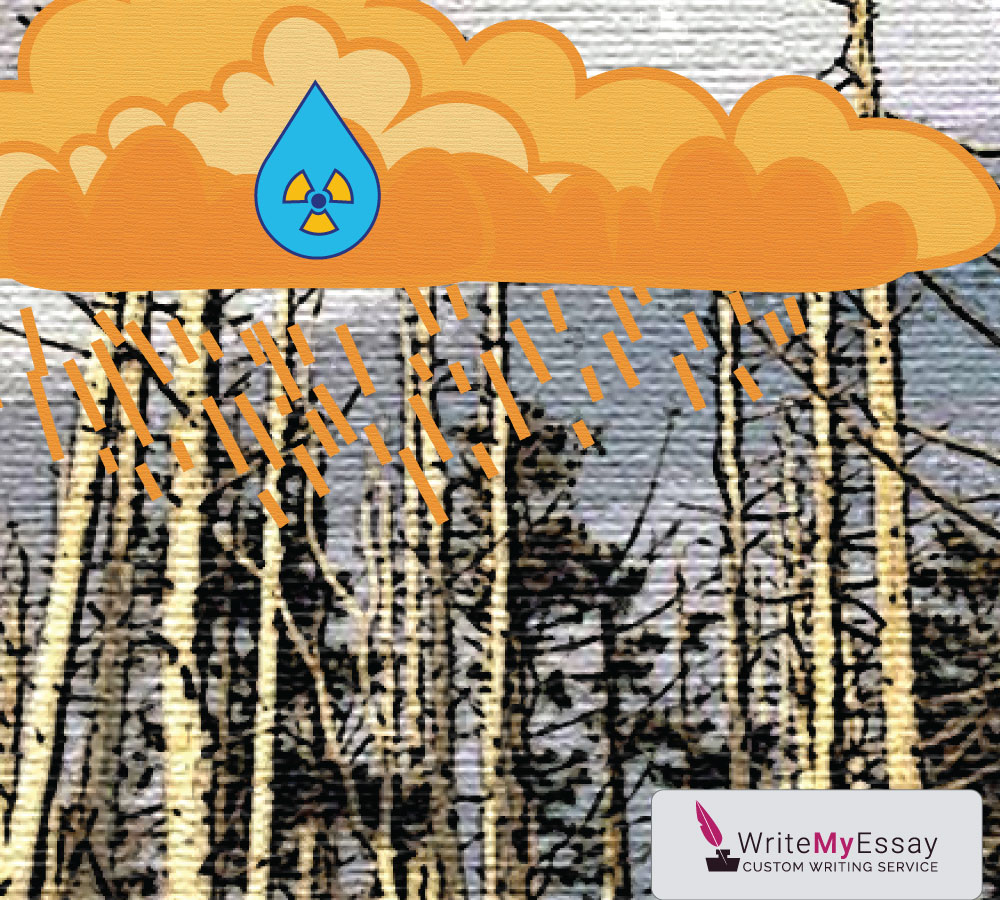The acid rain and its effect on plants and animals essay sample

Acid rains fall when sulfur and nitrogen dioxides are released from the production of fossil fuels. Volcano gas also saturates the atmosphere with toxic chemicals, but eruptions do not prevail in America and Europe where acid rains fall quite often. After such a rain, PH level of water in rivers and lakes drops and the water becomes more acidic. Though humans may not notice the change right away, aquatic animals indicate that something is wrong with the water.
Like other environmental disasters, acid rains impact ecosystems unevenly. Most fish is intolerant towards acid and dies out after the acid rains. Frogs have a higher tolerance towards acids but cannot survive without the mayflies they eat. The insect appears to be intolerant to acid water as well. Drying trees are another common effect of acid rains. Extracting aluminum from the soil, rains wash away all essential minerals and nutrients trees need to grow. Acid clouds may also directly manage foliage draining it from nutrients.
In some areas, soils can cope with acid rains. Thick soils with certain types of bedrocks neutralize acid water from rainfalls. Mountainous areas with thin soil are more susceptible to damage. Aluminum is the main chemical released from acid rains, but nitrogen is not better for the ecosystems. It stimulates the algal bloom that decreases the oxygen necessary for aquatic species. Nitrogen-based compounds are found in fish and drinking water extracted from contaminated sources; they are harmful to humans even at low levels.
